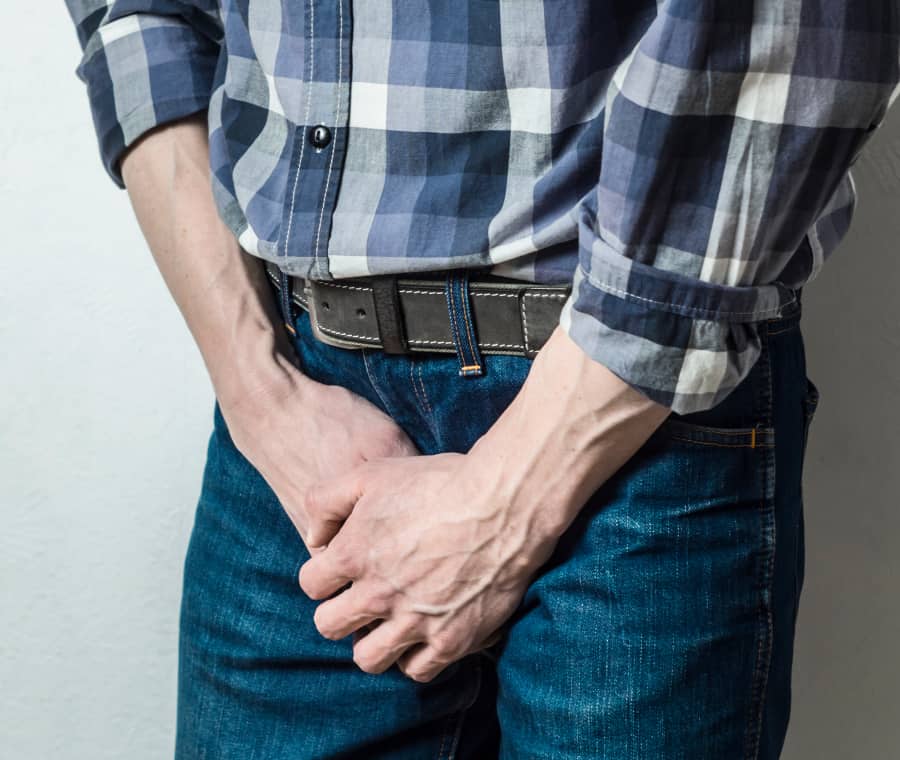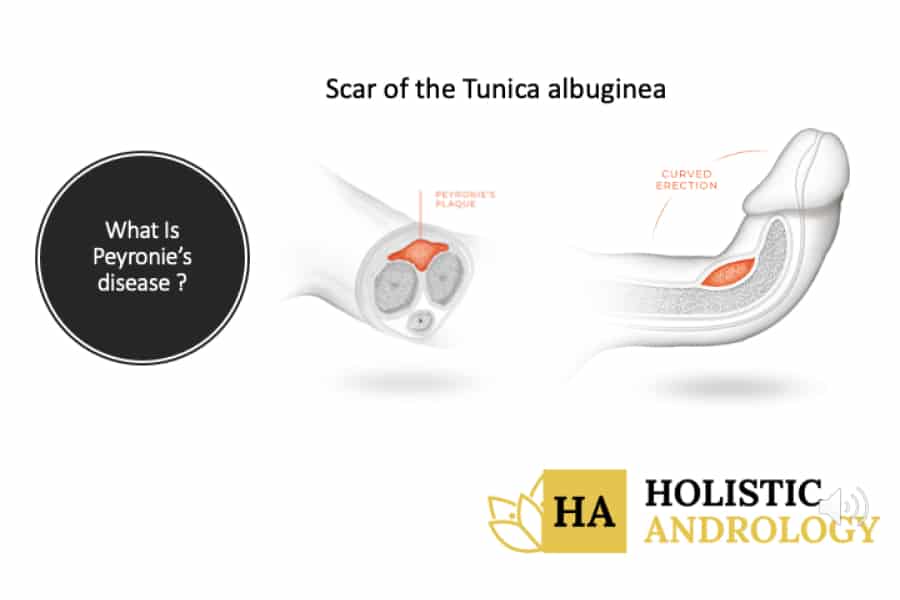What Is Peyronie's disease?
Peyronie's disease is named after François Gigot de Peyronie, the surgeon who described it for the first time in 1743.
Peyronie's disease is an acquired penile disorder (that is, something that you were not born with), characterized by pathological scar tissue in the compartment of penile compartment called the tunica albuginea. This scar tissue (also known as ‘plaque’) can negatively affect the penile shape, inducing a curvature. ED can also be associated with Peyronie's disease.
Peyronie's disease is a wound-healing disorder. The causes are usually multifactorial and can also be genetic. Penile trauma can be one of the triggers, but not the sole reason. The choice of the most appropriate treatment depends on the severity of the disease: for less severe cases, a multimodal, non–invasive approach is recommended, whereas more severe cases need surgery.
Is a penile curvature always a disease?
No, a certain degree of penile curvature is almost always present. It must also be remembered that, like all other parts of the body, the penis changes over time and with age and the penis can curve with time.
There is no clear medical definition for when the curvature becomes pathological.
In theory, curvature should only be considered pathological when it causes a problem during sexual intercourse with the patient or their partner or when the curvature becomes a psychological issue for the patient. We can, therefore, compare it to a crooked nose: it is a problem only when your breathing is affected or if you aesthetically do not like it.
Epidemiology
Peyronie's disease (PD) can affect all ages, but is especially common in older men. It affects 7–10% of the male population between 50 and 80 years old in the UK.
Cause
PD arises after a lump of fibrous scar tissue has formed inside the cavernous bodies, reducing the tunica albuginea's natural elasticity. In other words, Peyronie's disease results from a loss of elasticity on the penile tissue layer (the tunica albuginea) that usually, when reached by the blood, widen and allow an erection.
But what determines the formation of fibrous scar tissue?
This dilemma is not yet solved. Based on the current scientific evidence, PD can be considered a form of fibrosis. Fibrosis is a wound-healing disorder that often occurs in response to chronic tissue injury and that is defined by a persisting inflammatory reaction and the subsequent excessive accumulation of extracellular connective tissue proteins, such as collagen, elastin and fibronectin.

- Genetic. Scientific evidence has shown some genetic patterns can be linked to PD, so PD can be considered a partly hereditary disease
- Connective tissue diseases. People suffering from connective tissue disorders are more prone to PD. For example, men who suffer from Dupuytren's contracture can also develop PD.
- Cigarette smoke. Smoking can affect the development of PD.
- Some prostate surgeries, such as radical prostatectomy.
- Lack of erection or difficulty maintaining it throughout intercourse (erectile dysfunction)
- Total inability to have sexual intercourse
- Depression and shame related to the appearance of the erect penis
- Performance anxiety
- Difficulty in conceiving
- Depression is linked to an unsatisfactory sex life for oneself and one's partner
The onset of PD determines the different signs and symptoms seen. First, a palpable lump — the fibrous-scar nodule — forms on the body of the penis. This lump causes the penis to be curved, sore and shortened in length during an erection.
A bump and curved penis are the classic signs of Peyronie's disease
PAIN, ERECTION DYSFUNCTION AND DECREASED PENILE SIZE
Patients can experience an annoying, painful sensation when the penis is erect. Usually, the pain disappears after 12–18 months. Erectile dysfunction is related to the fibrosis of the corpora cavernosa, and the presence of a fibrous scar retracts the penis, causing it to appear shortened when erect.
The palpable lump is the fibrous-scar nodule. When touching it, it can feel like a wooden plaque or as a natural agglomeration of rigid consistency. The curved penis, on the other hand, is a condition due to which, during erection, the penis takes on an irregular curvature.
Evolution of symptoms
The curvature of the penis usually tends to worsen only during the initial stage of the disease. Over time, the lump stabilizes and the condition does not progress further.
Of note, spontaneous improvement (that is, without any treatment) of the curved penis is possible.
When to contact your andrologist?
IMMEDIATELY. Immediate early therapy in the initial active stage of the condition can prevent worsening of the curvature.

Peyronie's disease is associated with unmistakable signs; thus, a physical examination (observation of the disorders manifested by the patient) is usually sufficient to make the diagnosis. When performing an ultrasound scan of the penis, the doctor will want to identify the exact location of the fibrous scar agglomerate and determine its features.
Finally, in order to understand how the curvature of the penis evolves, it is a good idea to photograph your penis when it is erect and measure its size. The andrologist can use the photos and measurements to establish when and if the time has come to intervene surgically.
Before making any decision regarding therapy, the doctor evaluates:
- Whether the curvature of the penis is severe or not
- If the curvature is getting worse or is stable
- If the patient complains of pain during sexual intercourse
- If erections cause pain
- If the patient manages to maintain an erection for the duration of sexual intercourse
Non-surgical options
Most existing non-surgical managements are considered conservative treatments because they do not directly manipulate the scar in the tunica albuginea of the penis.
- Local infiltration of collagenases such as Xiapex® or Xiaflex®
- Collagenase is a synthetic enzyme obtained from a bacteria called Clostridium histolyticum.
- This enzyme can break down the collagen fibres accumulated in the fibrotic plaques of PD by being injected directly into the plaque.
- This drug has been used to manage PD and other diseases such as Dupuytren's disease.
- However, drugs marketed in Europe, such as Xiapex® or Xiaflex®, will soon no longer be available. At this point, it will be necessary to use other types of corrective therapy.
- The current European guidelines suggest using PDE5i, a stretching device and shockwave therapy.
- Dr Castiglione has developed a new non-invasive treatment Called P-Shocks®, which combines all the treatments currently available, including PRP (platelet-rich plasma).
When do you opt for surgical treatment?
The doctor opts for surgical treatment when the curvature of the penis is severe and the symptoms of the curved penis prevent normal sexual activity, including erectile function and ability to conceive.
Possible surgical treatments for the curved penis due to Peyronie's disease are:
- The Nesbit Procedure.
- In this approach, the surgeon removes a small portion of healthy tissue located on the opposite side of the fibrous-scar nodule in order to straighten the penis.
- This operation has two disadvantages: first, it shortens the length of the penis and, second, it increases the risk of erectile dysfunction.
- The triple incision-excision-transplant surgery.
- In this approach, the incision-excision-transplant site is where the fibrous-scar nodule was formed. The surgeon first removes (incises) the affected area, then removes a part of abnormal tissue and, finally, replaces the removed piece with a skin transplant.
- The skin tissue used for transplantation can be of human, animal or synthetic origin.
- As the danger of reducing erectile function is high, triple incision-excision-transplant surgery is practised only in cases of very accentuated curvatures of the penis.
- The implantation of a penile prosthesis.
- Several penile prostheses are available; some are designed to swell with an influx of liquid (hydraulic pumps), others are composed of semi-rigid material, which replaces the soft tissue of the penis and prevents the penis from bending.
- The choice of the type of intervention to be performed depends on at least three factors: the location of the fibrous scar tissue, the severity of the symptoms of the curved penis, and the patient's psychological state.
- If the surgery is particularly invasive, a hospital stay of at least one night is required; otherwise, the patient is discharged after a short observation period on the day of the operation.
- For any type of intervention, it is essential that the curvature of the penis has been stable for some time. Thus, it is recommended to photograph the penis periodically and observe if there have been changes from one photo to another.
- Patients who have undergone surgery for Peyronie's disease must wait 4 to 8 weeks before resuming normal sexual activity.







